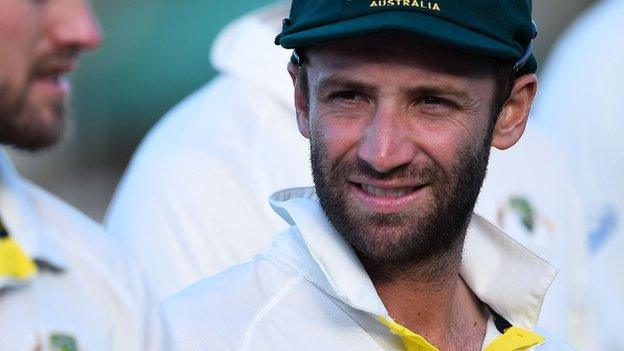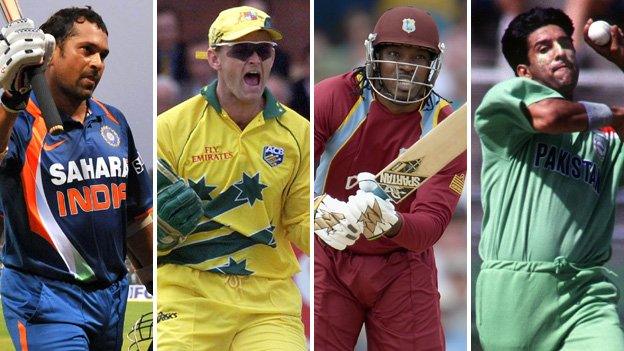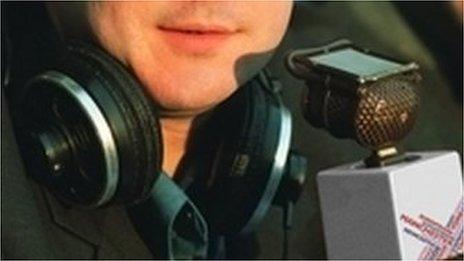Phillip Hughes: Cricket helmets redesigned after batsman's death
- Published
How can cricket helmets be made safer?
A British-based firm has designed a cricket helmet aimed at preventing another tragic death like that of Australian Phillip Hughes last year.
The 25-year-old batsman died when he was struck on the back of the neck by a short-pitched delivery in Sydney.
The incident was described as a "freak" by medical experts.
Hampshire-based manufacturer Masuri has given the BBC an exclusive look at its prototype helmet, which features extra protection at the rear.
New cricket helmet design explained
Batting for South Australia in a Sheffield Shield game against New South Wales in Sydney, Hughes was hit by a bouncer from Sean Abbott.
The batsman, who was wearing a Masuri helmet, collapsed immediately and died in hospital two days later.
After his death, the company began investigating a possible redesign and have introduced a "stemguard", a device made of foam and a rubber-like compound that clips onto the back of a helmet.
According to the company, Masuri provide "the most widely used helmet in Professional Cricket".
Design consultant Alan Meeks believes it will be both light and robust enough to prevent serious injury
"This arrangement of the foam and honeycomb gives as much protection as a hard helmet," he told BBC Sport.
"Even though it moves around and will touch the player when the ball hits them, it will absorb a significant amount of energy."
The International Cricket Council, which governs the game, has raised its recommendations for helmet safety standards in recent years.
Phillip Hughes: BBC Sport looks back at Australia batsman's career
However, in response to the growth in popularity of the 20-over format of the game, which encourages a greater range of strokes and a riskier style of batting, research and development had focused on protecting a batman's face.
The death of Hughes, who played 26 Tests for Australia, changed things.
"That tragic event definitely had an impact on the public," said Masuri's managing director, Sam Miller.
"I don't think there was a helmet on the market which would have protected Phillip.
"There had been some talk of protection to that area in the past, but it had been a footnote."
The "stemguard" has been tested extensively in a laboratory while it awaits production. Masuri say they have consulted international cricket boards throughout the design process.
A patent for the product is pending but its introduction in matches will depend on players' desire to wear the redesigned helmets.
- Published27 November 2014

- Published11 February 2015

- Published11 February 2015

- Published9 February 2015

- Published15 May 2018

- Published18 October 2019
